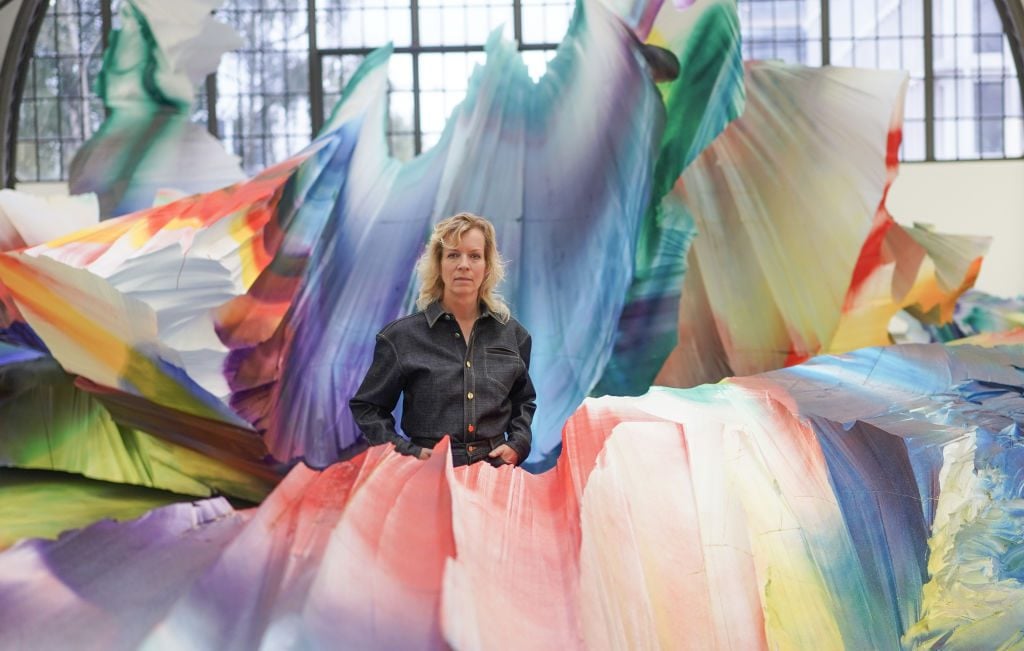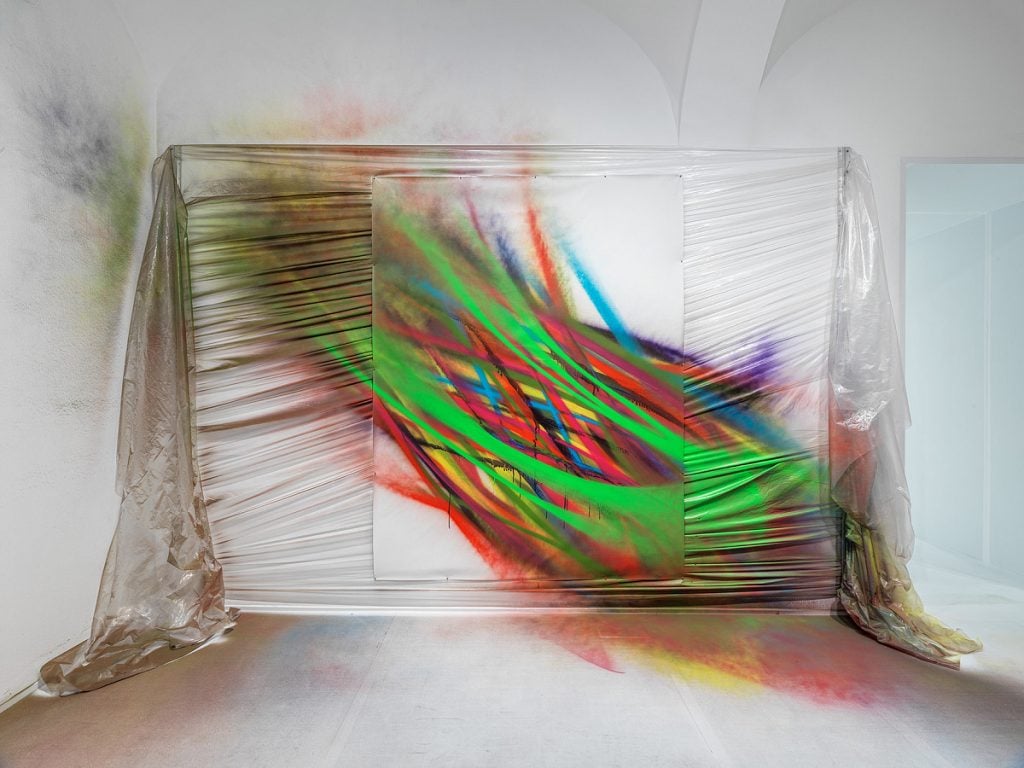Art & Exhibitions
How Artist Katharina Grosse ‘Accelerates and Compresses Time’ in Her Color-Filled Museum Interventions
As part of a collaboration with Art21, hear news-making artists describe their inspirations in their own words.

As part of a collaboration with Art21, hear news-making artists describe their inspirations in their own words.

Artnet News

Amid the vaulted ceilings and marble floors of the interior of Vienna’s Albertina Museum, slashes of vibrant color in every possible hue explode across the monochrome white walls. The chromatic intervention is courtesy of artist Katharina Grosse, whose contemporary artworks push the boundaries of form— collapsing structures, traversing corners and edges, spilling from wall to floor in exuberant motion. Wielding a compressorized airbrush allows the artist to achieve unparalleled force and dynamism, electrifying the staid white cube.

Installation view, “Katharina Grosse: Why Three Tones Do Not Form a Triangle.” Photo: Sandro E.E. Zanzinger Photographie, courtesy of the Albertina Museum.
In an exclusive interview filmed as part of Art21’s Extended Play series back in 2015, Grosse explained the genesis of her practice, which has vaunted her to become one of the most respected artists of the 21st century.
“Interestingly enough,” the artist said wryly, “color is an element in painting that has always been discussed… as the female, less stable, less clear, and not so intelligent element… whereas the concept—the line, the drawing—is more the male, the clear, the progressive, and intelligent part of the artwork.” Of course, Grosse utilizes color to create a concept, as she noted, “in relationship to the crystallized and built and materialized world that is part of what I do when I paint in space.”
Many of the artist’s interventions at museums, including the current exhibition at the Albertina, are site-specific and only last for the duration of the show. They become the space, transforming it entirely. “All the different actions go together on one surface,” she explained, “so it’s little bit like violence in a movie, which kind of accelerates and compresses time.”
Watch the video, which originally appeared as part of Art21’s series Extended Play, below. “Katharina Grosse
Why Three Tones Do Not Form a Triangle” is on view at the Albertina through April 1, 2024.
This is an installment of “Art on Video,” a collaboration between Artnet News and Art21 that brings you clips of news-making artists. A new season of the nonprofit Art21’s flagship series Art in the Twenty-First Century is available now on PBS. Catch all episodes of other series, like New York Close Up and Extended Play, and learn about the organization’s educational programs at Art21.org.